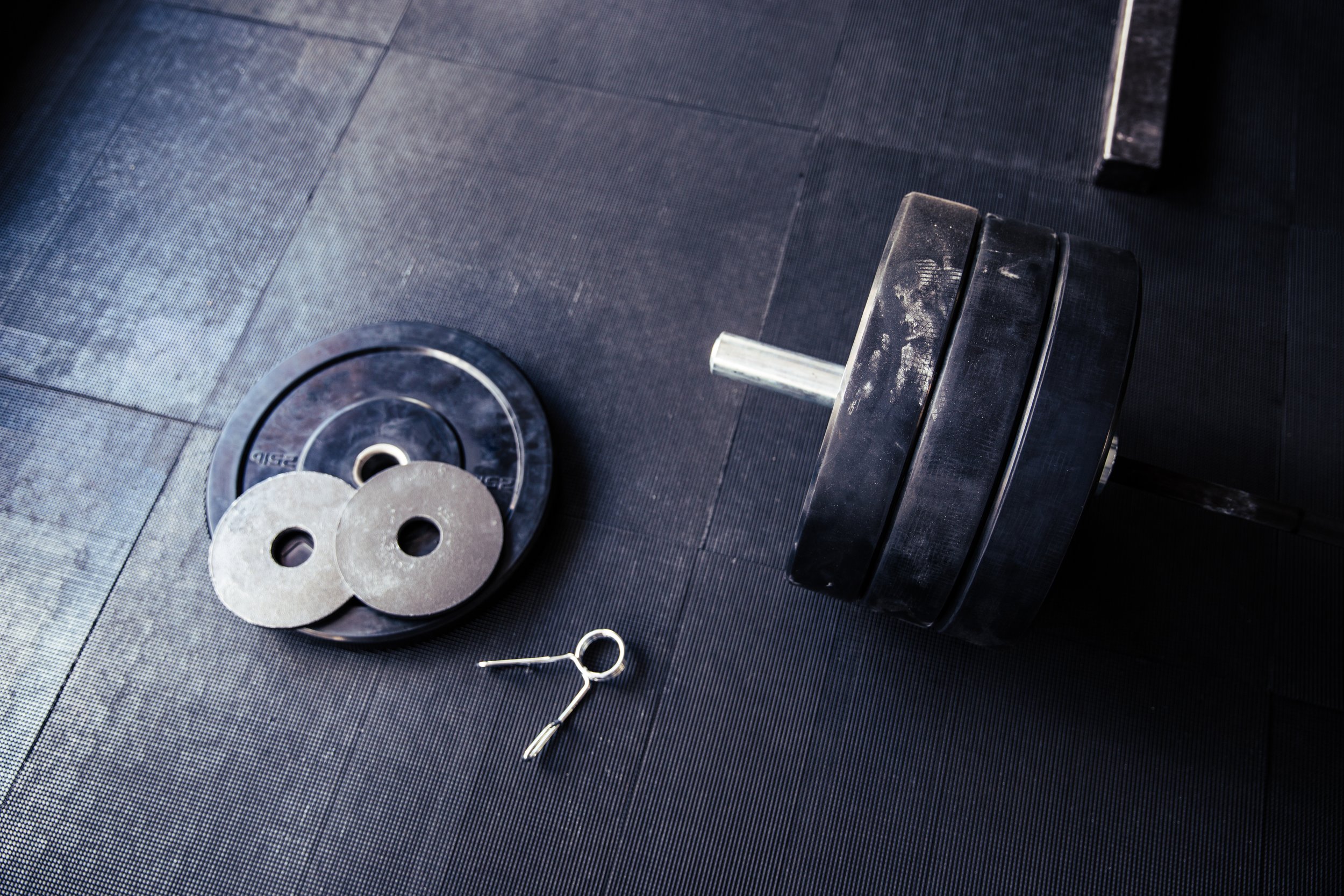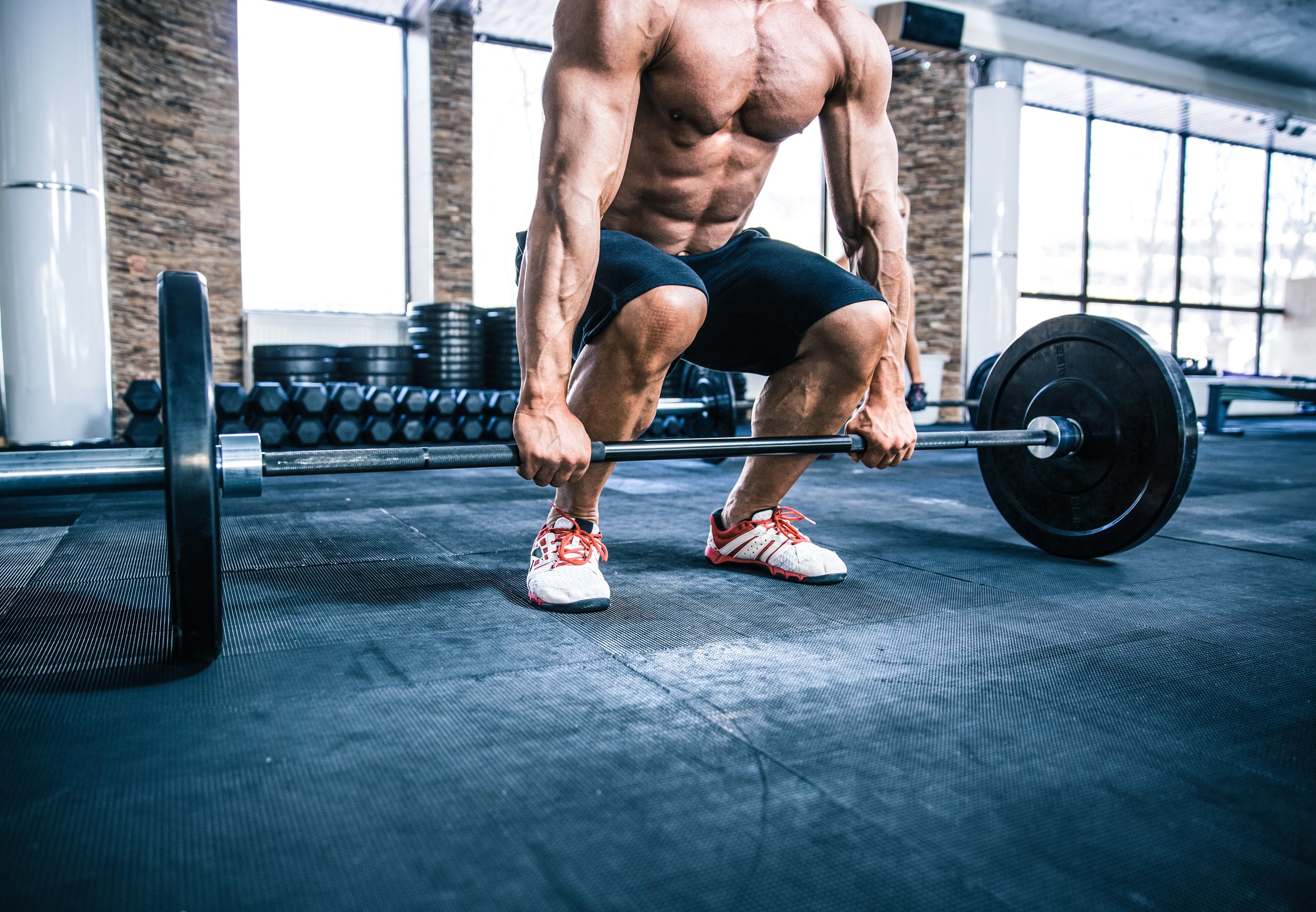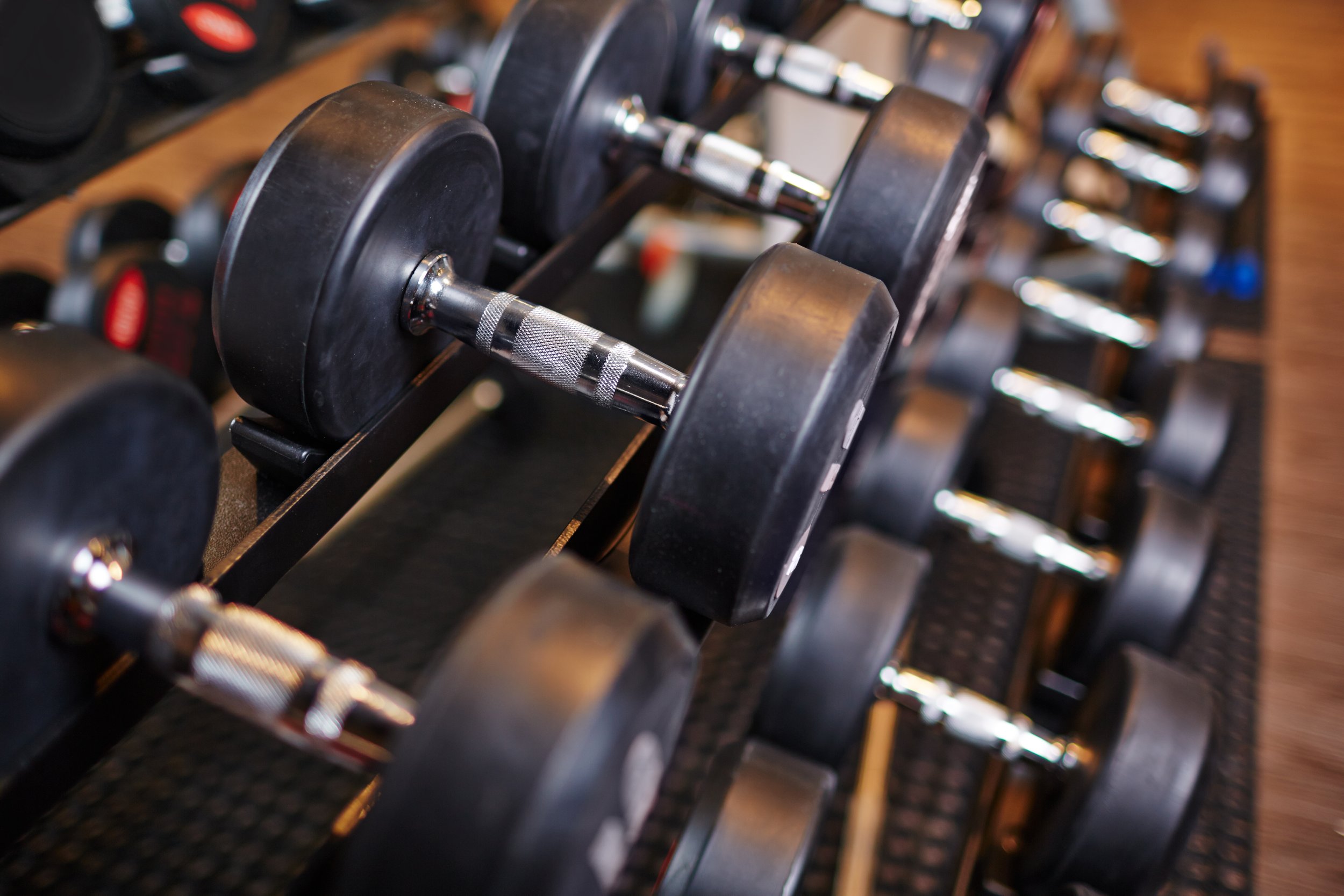Lifting Aids
Takeaway Points:
Lifting aids like straps, wraps, and belts are useful tools for heavy lifters who are looking to maximize their muscle and strength building. They can also aid in preventing injury while training difficult and high weight lifts.
When used properly, lifting aids help you train harder, longer, and more efficiently. Improper usage can cause issues, but that risk is minimal when you adhere to safe practices.
(This is an updated version of an article originally published on 4/9/13. It has been updated to give a more thorough look at lifting aids as a whole, as the prior version was mostly about lifting straps. It has been updated slightly in response to more recent research, and the quality and tone of the article has been updated for current standards.)
It’s commonly believed that using common lifting aids like straps, wraps, and belts, can be detrimental to your long term lifting progress.
This is a pretty common argument, but it completely misses the real nuances of the situation, and is likely to hold you back from reaching true strength and size potential.
The reality is that if you go into a serious powerlifting gym, you’ll find plenty of lifters making solid use of all of these lifting aids. I can say from personal experience that I’ve trained at Westside Barbell (’the strongest gym in the world’) and all the guys there will throw on every accessory possible for a normal everyday training session.
The argument is always something like this: if X accessory covers up Y weakness, then Y will never get developed and you become dependent on X to continue seeing strength gains.
In virtually every lift a strength athlete will attempt, it will be a large, full-body lift. This means that it will use large muscle groups and often many muscle groups at once in order to get the weight up. When using so many different muscle groups, all it takes is for one muscle group to fail for the entire lift to fail.
This is the basic principle behind all weakpoint training; by focusing on the weak part of the lift, whether it be the bottom of your squat or the lockout of your bench press, you can train that weak link to get out of the way and thus enable your stronger areas to function unhindered.
Lifting Straps
Lifting straps are straps which pass around the wrist in a loop, then can be wrapped around the bar. This enables you to much more easily hold onto the bar, because it makes it a lot harder for the bar to slip through your fingers, and helps to shift some of the weight directly onto the wrist rather than putting it all on the fingers.
If you can't hold on to the bar during a deadlift, then your grip strength is your weak point and it needs to be trained so that you can effectively lift the bar with the rest of your muscles. But, if you were to use lifting straps, then you would be able to lift the bar right away.
This has a few benefits. One, you can lift the weight right now. This means that you can continue to train the muscles that you would otherwise be unable to target effectively without enough weight on the bar, aka everything else but your grip strength. Being stronger at your deadlift may mean that you get a faster pull and can therefore lift it fast enough that your lack of grip ceases to be an issue. If you didn't have the straps, this wouldn't have been possible.
Further, not all muscle groups are created equal. Some are bigger than others, some build strength faster than others.
Your grip strength, sad to say, is based on a much smaller set of muscles than your deadlift. This means that in training, your grip strength will for some people always be lagging behind your deadlift, unless you do other training that involves grip strength as well.
Now say you've done your deadlifts for the day; your grip strength is tired out and your palms have been torn up holding on to the bar. But you've still got other lifts to do, and these still involve grip strength. Either you can suffer through those lifts poorly and allow your performance to suffer since you won't be able to hold on to them effectively, or you toss on some straps and hit them up without issue.
If your grip strength is already tired out then you've already done all you can to improve your grip strength for the next workout. There’s no point in making the rest of your workout suffer, just because you refuse to use lifting straps.
There are other lifts where grip strength plays into the equation, but the primary function isn't to develop grip strength. Shrugs, calf raises, and some variations of rowing exercises are good examples.
In each, grip strength is not the main focus: when I'm doing calf raises, I need a good two hundred pounds to challenge my calves. But to hold on to two hundred pounds gets very tiring for my hands very quickly, particularly when your gym equipment is like mine and all the dumbbells above a hundred are so little used that the grips will shred your hands just for picking them up. I can painfully struggle to hold on to them while my calf workout suffers, or I can just use straps and let my calves get in a good workout while my grip strength is a non-issue. Is a calf raise a competitive lift? No. Do I care that my grip strength isn't good enough for it? No. I'm just looking to get a good workout for my calves.
If used properly, lifting straps will actually improve your lifts by removing a common weak point, your grip strength, from the equation. For best results, use your straps after you've already exhausted your grip strength and need to keep training, or on lifts when grip strength isn't an issue. In this way straps will allow you to train harder than your grip strength would normally allow, allowing you to build more strength in your primary movers, and ultimately benefiting your lifts.
So, lifting straps could be a negative if you used them all the time, but they can be a net positive if you use them wisely.
Belts
Lifting belts are thick belts, worn around the torso, which help you to lift more weight.
It’s commonly believe that belts work to actively help you lift more weight by providing stability to the torso. It’s conjectured, that this could mean less muscle activation, and therefore over time, a weaker core.
Research has actually shown us mostly the opposite.
The belt doesn’t actually work by providing stability - it works by effectively providing something for your torso/abs to push against, helping to increase abdominal pressure and thus better stabilizing the spine, and allowing you to lift more weight on movements like the squat, deadlift, and overhead press, all of which have significant spinal stability requirements.
What this means is, the belt actually cues your core to fire more strongly, which is how it works. While there’s obviously no real point to using a belt on a lot of lifts, it’s basically always a net positive on lifts where it does provides a benefit, and this would enable you to move more weight, get stronger, and build more muscle over time.
Wrist Wraps and Knee Wraps
Wrist and knee wraps are stiff wraps which are applied around the relevant joint to provide stability and increase the amount of weight that you can lift.
With wrist wraps, the main benefit is a bit of added stability - the wrist joint doesn’t move through a huge range of flexion during the bench press, so this does not generally mean that you can move more weight.
With knee wraps however, the benefit can be big, and allow you to move a lot more weight, because the knee goes through a significant range of flexion during the lift. This means that when you get deeper into the lift, the wraps can provide a bit of elastic ‘bounce’ which helps you to get out of the hole. However, the wraps also have to be applied carefully and tightly for the effect to work properly, and this often means that they can’t be worn for too long after the lift is complete without causing some discomfort or circulation issues.
Generally, wrist wraps can be worn whenever - they probably don’t have too much of an impact on your performance, so they likely don’t hinder training at all. But knee wraps have to be considered more carefully - since they do impact your performance, you’d want to wear them on heavy squat days so that you can easily train with the heavy weights that you need to progress, but you’d probably not want to wear them on lighter training days.
Accordingly, these wraps are often only used by equipped powerlifters looking to get a good heavy training session in, and may not be useful for the average lifter, raw powerlifter, or physique-focused lifter.
Knee Sleeves
Knee sleeves are a kind of fabric sleeve which is slipped on over the knee. Unlike the knee wraps, they don’t really provide much support, so it’s also unlikely that they’re really impacting your training adaptations much, if at all. The main benefit here, is that knee sleeves can be worn to help keep the knee joint warm, which can assist with injury prevention, especially if you have cranky knees that need a lot of warming up.
While some modern knee sleeves are designed so that they might provide a bit of support, generally the effect is minimal, so these are little more than an injury management tool, and there’s no real downside to their use.
Shoes
Different shoes are valuable for different types of lifting - in particular, squatting and deadlifting are the two big movements with the biggest requirements here.
For most upper body lifts, your shoes are not terribly important because the movement is largely reliant on the upper body, and your feet are not in play. You can really wear anything and you’ll be fine.
For cardio, a running shoe or generic all-purpose trainer/sneaker is generally best. These shoes have cushioning which mitigate the impact of your footfall when you run, which protects the ankles and minimizes injury risk in the longer term.
For squatting and deadlifting, different shoes are useful.
For the squat, the main thing that you want is a hard, stable shoe. If you squat in trainers/sneakers, this can compromise your stability in the movement, and ultimately lead to bad movement patterns and poor muscular and strength development.
The second thing you want out of a squat shoe, is a bit of a heel. Having your heel elevated, puts your knees naturally further forward during the movement, which helps most lifters to get deeper into the movement. This is not something that you can ‘train’ - you’ll always be able to get deeper into the movement by elevating the heels, no matter how flexible you are, so there’s no reason not to use this effect to get a better range of motion. A better range of motion means more strength and size gains over time.
Luckily, they sell specialized squat shoes which combine the two effects - a solid stable shoe, with a raised heel. If you can’t afford squat shoes and have good flexibility, you can often get away with a solid stable shoe without a raised heel, like a pair of cheap Converse.
For the deadlift, like the squat, the main thing you want is a solid, stable shoe. You also want something that puts you as close to the ground as possible, as this shortens the distance that the bar has to travel during the lift. As above, a pair of cheap Converse will usually do the trick, as this is a good example of a flat, thin shoe. This is why Converse are commonly seen among powerlifters as their lifting shoes.
Similarly to your squat shoes, there’s no downside to using a better shoe for the deadlift - this is not an effect you could ‘train’ to get better at over time, it simply puts you in a slightly more advantageous position to complete the lift, and thus increases your ability to handle heavier weights at all levels.
Tying It Up
Some lifting aids (like lifting straps and knee wraps) have the potential to cause issues with your training if misused.
Other lifting aids (belts, shoes) have no visible downsides and notable upsides, so there’s no reason not to use them.
And then there are some lifting aids (wrist wraps, knee sleeves) which may be very situationally useful, or provide some small benefit, but as a result of the smallness of the effect, probably won’t cause any issues with your training.
If you use lifting aids intelligently, you can enhance your results over time, increasing the muscle and strength you get from lifting - so, swearing off lifting aids because of the misguided notion that they’re all bad, is certainly likely to hold you back!
About Adam Fisher
Adam is an experienced fitness coach and blogger who's been blogging and coaching since 2012, and lifting since 2006. He's written for numerous major health publications, including Personal Trainer Development Center, T-Nation, Bodybuilding.com, Fitocracy, and Juggernaut Training Systems.
During that time he has coached thousands of individuals of all levels of fitness, including competitive powerlifters and older exercisers regaining the strength to walk up a flight of stairs. His own training revolves around bodybuilding and powerlifting, in which he’s competed.
Adam writes about fitness, health, science, philosophy, personal finance, self-improvement, productivity, the good life, and everything else that interests him. When he's not writing or lifting, he's usually hanging out with his cats or feeding his video game addiction.
Follow Adam on Facebook or Twitter, or subscribe to our mailing list, if you liked this post and want to say hello!
Enjoy this post? Share the gains!
Further Reading:
Ready to be your best self? Check out the Better book series, or download the sample chapters by signing up for our mailing list. Signing up for the mailing list also gets you two free exercise programs: GAINS, a well-rounded program for beginners, and Deadlift Every Day, an elite program for maximizing your strength with high frequency deadlifting.
Interested in coaching to maximize your results? Inquire here.
Some of the links in this post may be affiliate links. For more info, check out my affiliate disclosure.







